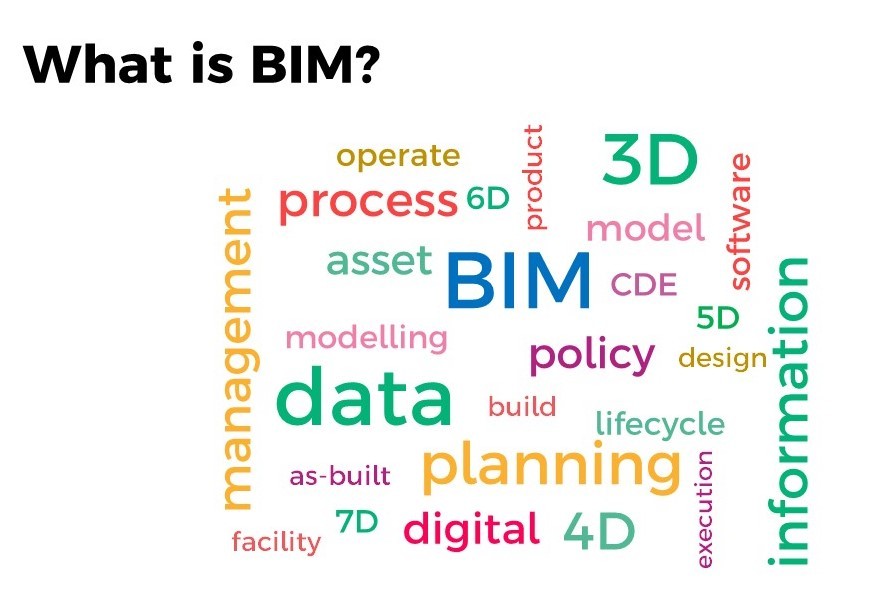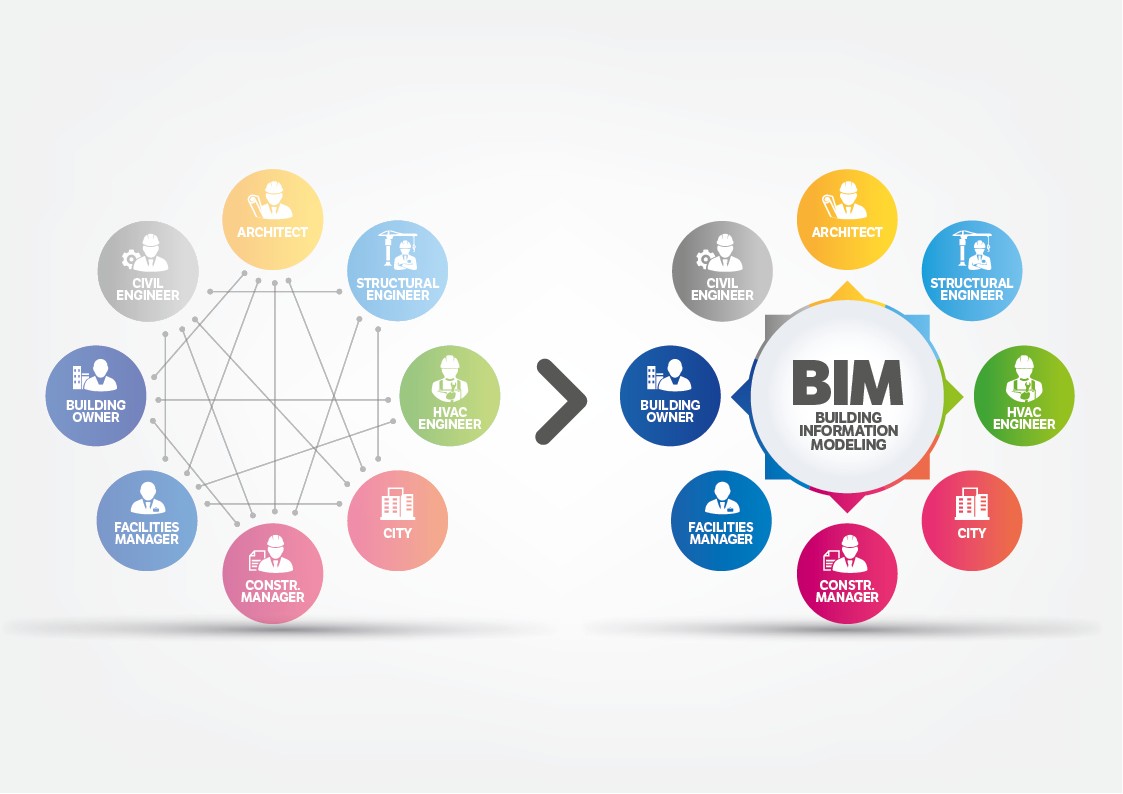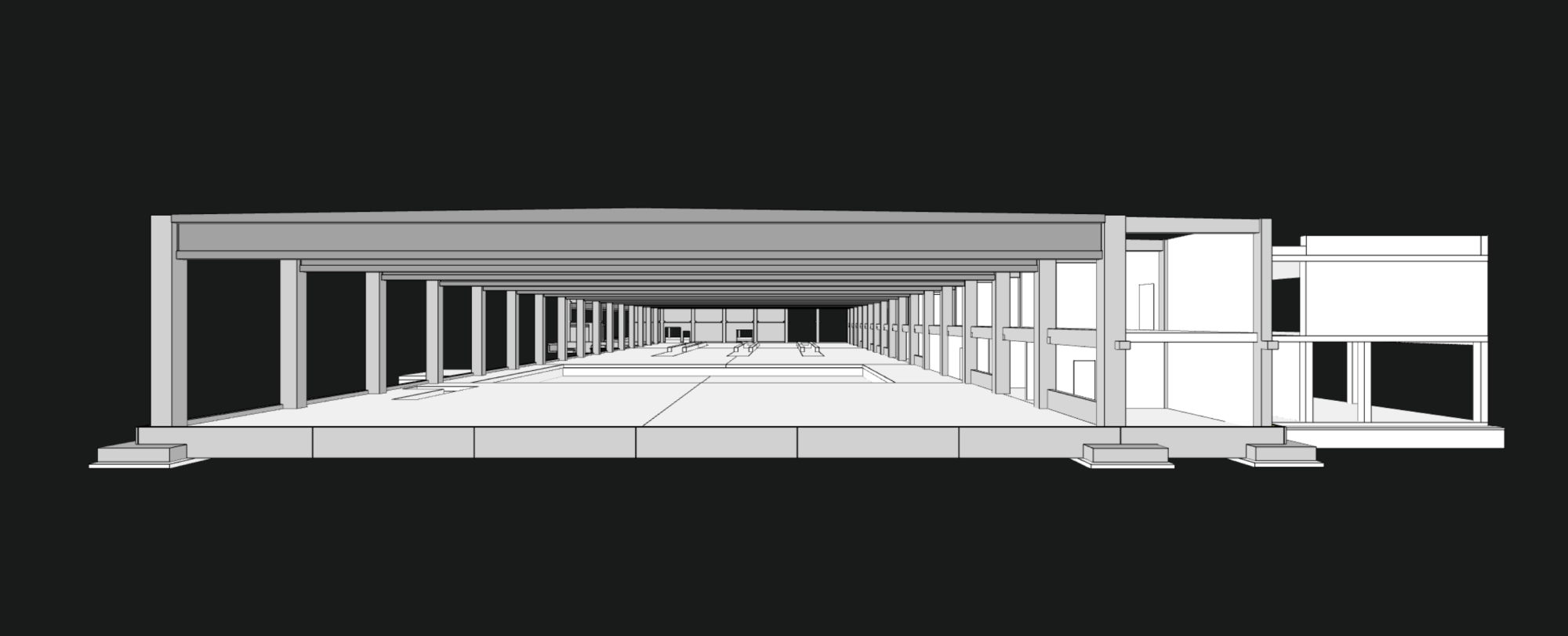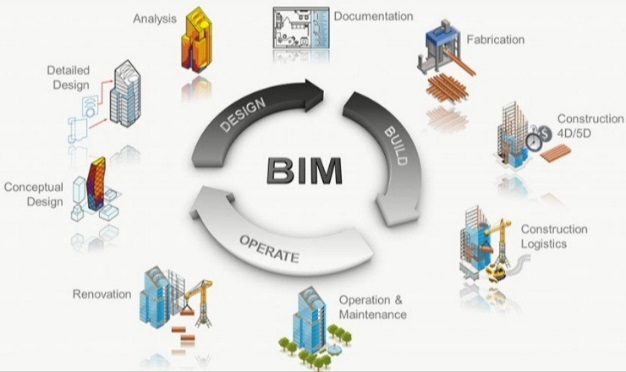Whether you are a new or old member in the construction industry, we can all agree that the term ‘BIM’ has become a big buzzword that has taken the industry by storm. From architects, engineers, builders, governments, software developers, and even prestigious institutional thought leaders such as McKinsey, and the World Economic Forum alike — BIM has been touted as the necessary step to drive real change in an industry that is stuck in working with tools and methods from the ‘medieval’ times. To make sense of the buzzword, you may want to ask, “what exactly is BIM"?
Introduction to BIM: Making sense of THE Buzzword
What you will learn today:
BIM is THE Buzzword of the industry and, due to its popularity, often misunderstood or at least ambiguous.
The US National BIM Standard (NBIMS-US) describes BIM as a process, a product, and a management approach, each of which definitions are intertwined.
In the end, BIM is all about the creation and use of information to enable connectivity between teams and informed decisions during the entire lifecycle of a building.

Defining BIM: a word, acronym, or something else?
BIM has come a long way, with numerous definitions circulating across the globe. A simple web search of the term ‘BIM’ would conjure up a flood of numerous definitions and explanations. To be exact, you get 271,000,000 hits within a fraction of a second on Google. As a result, the use of the terminology has become somewhat confusing depending on the context of use. It will be easy to find the term being used interchangeably as a software, a design tool, a construction tool, a data management system, a process or even a model.
For the sake of providing clarity, we refer to one of the industry’s most respectable resource on this subject — the US National BIM Standard (NBIMS-US). The NIBS provides three interlinked descriptions of the terminology as a process, a product, and a management approach[1].
BIM as a Business Process
“Building Information Modeling: Is a BUSINESS PROCESS for generating and leveraging building data to design, construct, and operate the building during its lifecycle. BIM allows all stakeholders to have access to the same information at the same time through interoperability between technology platforms”. — NBIMS-US Version 3[2].

The BUSINESS PROCESS refers to the series of separate but interconnected workflows occurring across different stages of a building project. Such workflows consist of the creation of designs, work plans, budgets, reports etc. Central to this process is the human activity that involves the creation and use of information between different sets of people and organizations. Through a shared database approach, BIM enables better connectivity and collaboration between teams — from an architect in the design office to the foreman on the construction site.
BIM as a Product
“Building Information Model: Is the DIGITAL REPRESENTATION of physical and functional characteristics of a facility. As such, it serves as a shared knowledge resource for information about a facility, forming a reliable basis for decisions during its life cycle from inception onward”. — NBIMS-US Version 3.

The digital representation refers to an intelligent three-dimensional model created in virtual space to visualize architectural/engineering design, construction, and/or facility management data via the use of software tools. This digital model can further be referred to as a product resulting from the business process mentioned above. In the past, such business products were created in paper formats, today they are represented in digital formats where the 3D model serves as the source for every type of information.
BIM as a Management Approach
“Building Information Management: is the ORGANIZATION & CONTROL of the business process by utilizing the information in the digital prototype to effect the sharing of information over the entire lifecycle of an asset. The benefits include centralized and visual communication, early exploration of options, sustainability, efficient design, integration of disciplines, site control, as built documentation, etc.– effectively developing an asset lifecycle process and model from conception to final retirement.” — NBIMS-US Version 3.

Take note of the key aspects of this definition. It recognizes the importance of utilizing the information from digital models (product) to ‘coordinate’ the various workflows (business process). Here, the central focus is to look at BIM as an Information Management approach to support decision-making in the context of construction. Remember that workflows refer to the interactions between people who rely on access to fast, adequate, and reliable information to make informed decisions. Also, when we begin to imagine a building’s lifecycle as a series of interdependent phases, it becomes easier to see the critical role of BIM as an ‘enabler’ for digitizing and connecting the entire value chain[3].
Concluding thoughts
Depending on the context of use, BIM can be described as a process, a product, and a management approach, each of which definitions are intertwined.
BI(Modelling) is a process in the context of people ‘modelling’ or creating different types of asset information.
BI(Model) is a product in the context of the digital model resulting from the ‘modelling process’ that serves as a representation of an asset.
BI(Management) is the organization of processes and models to facilitate the entire lifecycle of a built asset — from conception to end of use.
Note that an asset refers to any kind of physical structure such as a building, bridge, highway, dam, or transmission tower.
Just like every other buzzword, the tendency for misinterpretations is bound to occur amid the use or ‘overuse’ of technical jargon. Therefore, if we truly want to enact the needed digital transformation, it is our responsibility as an industry to come to a consensus on the use of the terminology. By making sense of the buzzword, we can finally come to a basic understanding of what BIM is. Moving forward, our upcoming blog posts will provide deeper insights of the concept and application of BIM in the construction industry.
Additional Notes:
Here are some curated definitions we believe would provide further insight on the terminology.
Use of a shared digital representation of a built asset to facilitate design, construction and operation processes to form a reliable basis for decisions. — ISO 19650
a process supported by various tools, technologies and contracts involving the generation and management of digital representations of physical and functional characteristics of places. — Wikipedia
Building information models (BIMs) are computer files (often but not always in proprietary formats and containing proprietary data) which can be extracted, exchanged or networked to support decision-making regarding a built asset. — Wikipedia
Building Information Modelling (BIM) is a set of technologies, processes and policies enabling multiple stakeholders to collaboratively design, construct and operate a Facility in virtual space. — BIM Dictionary
Building Information Modelling (BIM) is a very broad term that describes the process of specifying, creating, and managing digital information about a built asset such as a building, bridge, highway or tunnel. — BIM Wiki
[1] “BIM: An Introduction.” PennState College of Engineering, Retrieved July 8, 2022, https://bim.psu.edu/bim-an-introduction/defining-bim/
[2] “NBIMS-US Version 3 — Terms and Definitions.” US National Institute of Building Sciences, 2015, p. 3 https://www.nationalbimstandard.org/files/NBIMS-US_V3_3_Terms_and_Definitions.pdf
[3] Kai-Stefan Schober, “THREE CONTECH TRENDS FOR THE 2020S.” Roland Berger, August 22, 2019, https://www.rolandberger.com/en/Insights/Publications/Three-contech-trends-for-the-2020s.html